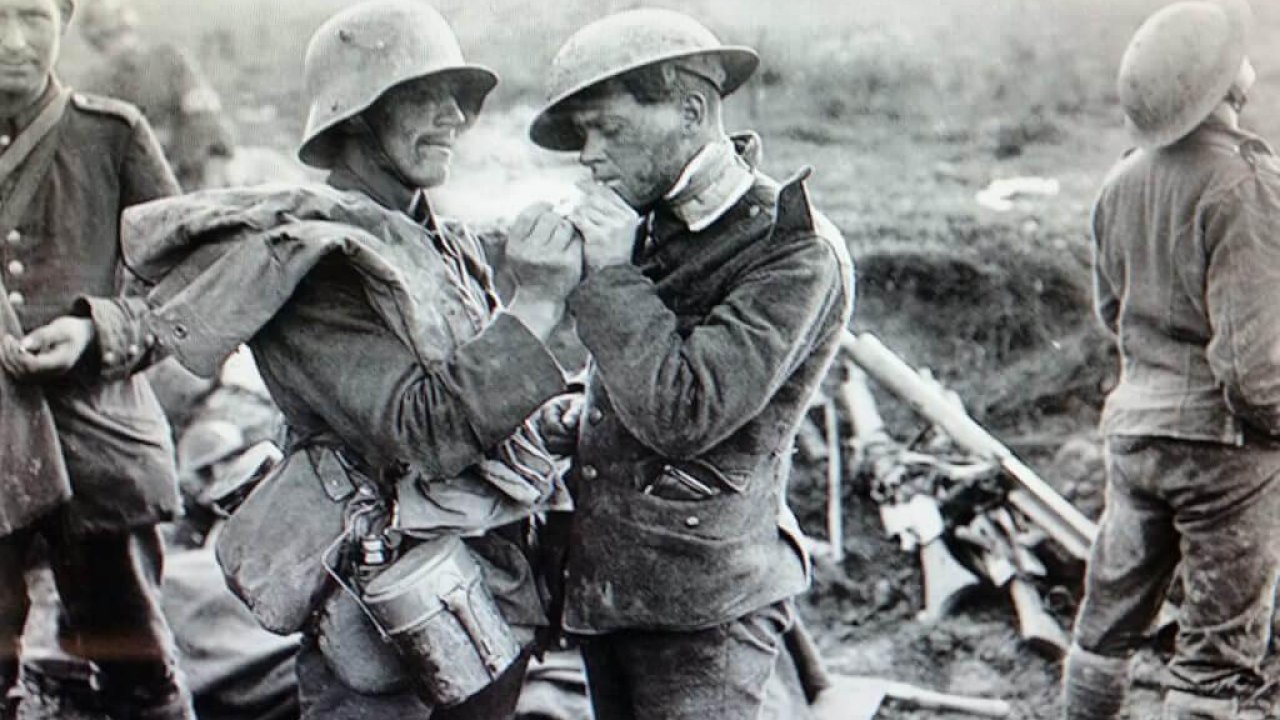
As the darkness of World War I descended upon Europe, a miraculous event occurred on the front lines on Christmas Eve 1914. In the midst of the brutal fighting and bloodshed, soldiers from both sides of the conflict laid down their weapons and came together in a show of humanity and solidarity.
The Christmas Truce
The Christmas Truce, as it came to be known, was a spontaneous and unofficial ceasefire that took place along the Western Front, where the majority of the fighting was occurring. It is believed that the idea originated with the German soldiers, who decorated their trenches with Christmas trees and began singing carols. The British and French soldiers, hearing the singing, were moved by the gesture and responded by singing carols of their own.
As the night went on, the soldiers began to venture out of their trenches and meet in no man’s land, the area between the opposing trenches. They exchanged gifts, played football (soccer) together, and even buried their fallen comrades side by side.
Killing isn’t in our nature
There has been research conducted on the psychological factors that influence soldiers’ willingness to kill in war. One study found that, in World War II, only 15-20% of soldiers actually fired their weapons at the enemy, while the majority either missed on purpose or intentionally fired over the enemy’s heads. This phenomenon, known as “combat refusal,” is thought to be due in part to the inherent human resistance to taking another person’s life.
This idea is supported by the fact that soldiers who do engage in combat often experience moral and psychological turmoil, with many suffering from post-traumatic stress disorder (PTSD) and other mental health issues as a result. The Christmas Truce of 1914 may be seen as a manifestation of this inherent reluctance to kill, as soldiers from both sides temporarily set aside their weapons and came together in a peaceful and humanitarian gesture.
While it is important to recognize the role that training and conditioning play in soldiers’ willingness to engage in combat, it is also worth considering the psychological and moral barriers that may prevent individuals from killing their fellow human beings. The Christmas Truce serves as a poignant reminder of the humanity that exists even in the midst of war and conflict.
Brief moment with lasting impact
The Christmas Truce was a fleeting moment of peace in an otherwise devastating and deadly war, but it has left a lasting impact on history. It serves as a reminder that, despite the divisions and conflicts that may separate us, we are all human beings with the capacity for compassion and understanding. It is a story of hope and inspiration that continues to resonate more than 100 years later.
20 ideas to promote peace
Here you find twenty positive ways to promote peace in our badly broken world.